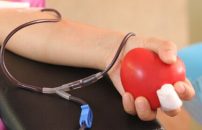Courtesy of Dr. Carlos Fava. Stroke is one of the most undesirable complications we can face and, regarding transcatheter aortic valve replacement (TAVR), major studies presented have rates of stroke of about 4%. In others, rates have been slightly higher. This meta-analysis included 5 randomized studies between 2011 and 2017: PARTNER, CoreVALVE, NOTION, PARTNER 2, and SURTAVI.…
Angina Is as Subjective as Any Other Pain
Almost 80% of all patients randomized in this study reported Canadian Cardiovascular Society class II or III angina, and almost all of them (97%) had more than 1 positive non-invasive ischemia test that matched the area of their single diseased coronary vessel. Beyond fractional flow reserve (FFR) or instantaneous wave-free ratio (iFR), the study randomized patients to…
CTO Revascularization Improves Quality of Life
Courtesy of Dr. Carlos Fava. The presence of CTO hovers around 15, 20% in coronary angiographies of patients with chronic stable angina, but only 5% receive percutaneous coronary intervention (PCI). One of the obstacles to percutaneous revascularization is the lack of relevant studies justifying it, though we do have different comparative studies that improve symptoms, ventricular…
Manual vs. Mechanical Compression after Transradial Catheterization
For patients undergoing transradial catheterization, whether puncture site compression is manual or mechanical has no significant difference as regards post procedural radial artery occlusion (RAO) rate. Hemostasis is shorter with manual compression, but it seems difficult to implement in the clinical practice. We could carry out an economical sub-analyzis of this study to find out…
What Antiplatelet Therapy Should We Use in Patients with Stroke/TIA? Interesting Results for the POINT Trial
Courtesy of Dr. Alejandro Lakowsky, MTSAC (Full Member of the Argentine Society of Cardiology) The New England Journal of Medicine (NEJM) recently published an article about the POINT trial (simultaneously presented at the European Stroke Organisation Conference), a long-awaited randomized clinical trial to assess the efficacy and safety of dual antiplatelet therapy (DAPT) with aspirin…
More Bad News on Bioresorbable Scaffolds
A year after the implantation of everolimus-eluting bioresorbable scaffold Absorb 1.1, optical coherence tomography (OCT) scans showed neointima formation covering plaque without significant luminal loss. At 5 years, the device is supposed to disappear completely, potentially thrombogenic plaque components are supposed to be covered by endothelium, and the vasomotor function is supposed to be recovered. However, there…
Leaflet Laceration, an Extreme Measure to Avoid Coronary Occlusion After TAVR
Intentional leaflet laceration before mounting the prosthesis on the release system, so as to reduce the risk of acute coronary occlusion, seems a desperate maneuver to force transcatheter aortic valve replacement (TAVR). Unfortunately, we will always encounter patients without other real choice; in those cases, creativity may start as compassionate treatment and then be upgraded…
New Tools to Define Intervention in Asymptomatic Carotid Disease
This meta-analysis included 14 studies and compared the uptake of fluorodeoxyglucose (18F-FDG) according to positron emission tomography (PET)/computed tomography (CT) in symptomatic versus asymptomatic patients, demonstrating a significantly higher uptake in patients with symptomatic lesions. While PET/CT imaging of atheroma is a tool under investigation, with limited applicability in clinical practice, in a relatively close future,…
EuroPCR 2018 | TRANSIENT trial: What is the best timing for TRANSIENT STEMI revascularization?
The objective of this study was to determine the best time to revascularize a patient who is undergoing an acute coronary syndrome (ACS) with transient ST segment elevation. This population hovers around 15% of STEMI patients. The question is whether to reduce infarction area (or potential reinfarction) with an immediate intervention, or to delay intervention…
EuroPCR 2018 | Ultimaster Registry: Difference in Strut Thickness
This work compared the safety and efficacy of angioplasty with thin-strut (80 µm) sirolimus-eluting stents with a cobalt chromium structure (Ultimaster) vs. thick-strut (120 µm) biolimus-eluting stents with a cobalt chromium structure (Nobori). This study compared two prospective multicenter single-arm registries: e-Ultimaster and NOBORI 2. The Ultimaster Registry included over 37,000 patients in 4 continents, while the NOBORI 2 Registry included…









